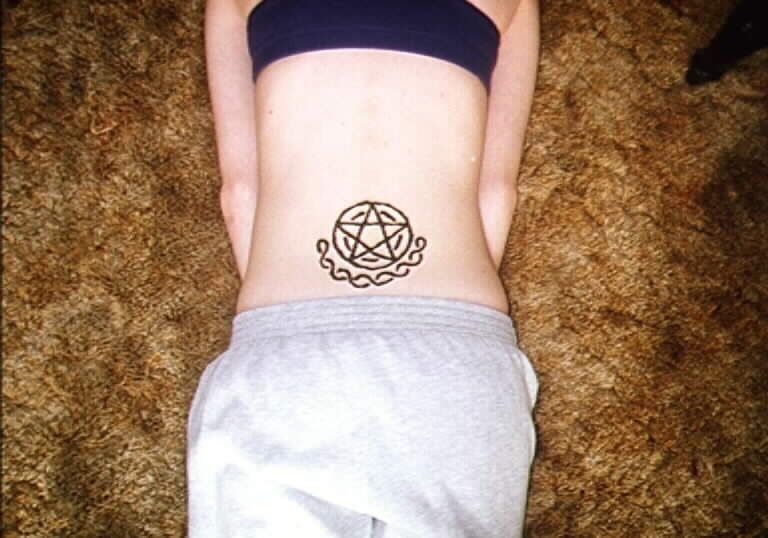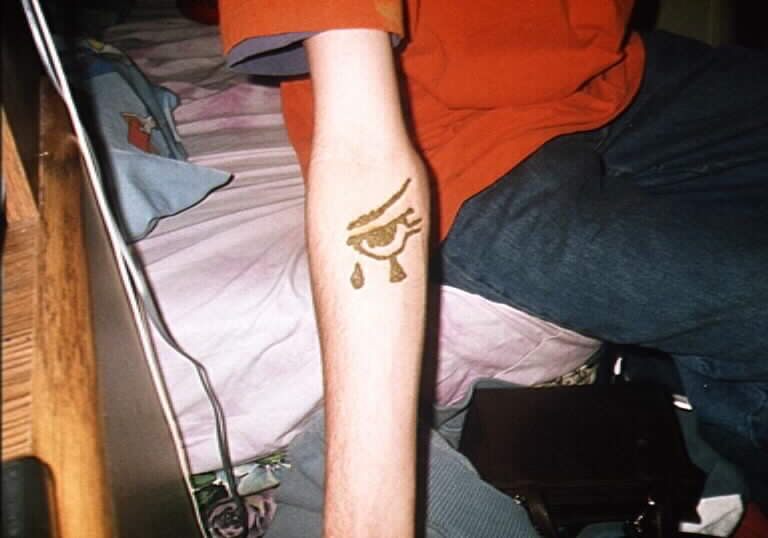 This is one of my first tries. It took a fw applications before I got a really dark tone. This is Amy (my wife).
This is one of my first tries. It took a fw applications before I got a really dark tone. This is Amy (my wife).Mehendi
Mehendi, Mehandi, Mendi, Mandhi.... its all the same, Henna Body Art.
Henna is a small shrub that grows in Arabia, North Africa, Iran and the East Indies. The grayish green leaves are eliptical and are from 1-2 inches long. Fragrant red flowers are prized by Egyptians as a medicinal agent for headaches and as an astringent. Most important to me is what the stuff does to your skin!
When the leaves are dried, they are crushed and powdered. The powder is added to a little bit of water and made into a mud-like paste. When applied to the skin and allowed to dry, it stains the skin in whatever pattern was made. It can also be applied to the hair as a coloring agent. The Egyptians were the first to use henna as a paint, the stone statues found in temples and the Pyramids are stained red because of henna. Somewhere, thousands of years ago, trade between India and Egypt brought the plant to the Indies. There, the henna was used as body decorations. To this day, the Indian tradition of Mendhi is still going on. Mostly used for weddings or ceremonies, Mendi artists paint thier subjects hands, arms and feet. It was once a custom to hide the grooms name in the art and he would have to find it before the marraige could take place.
Mehendi is now becoming popular in the west. It has recently been popularized by Madonna at the 1998 MTV music awards. The designs range from traditional Indian art to Irish Celtic knotwork. The designs last anywhere from a week to a month depending on the type of skin, thickness of skin and how often the skin is washed.
I have been doing Mehendi for about a year now, I prefer the pre-filled tubes by Rani brand, but only because I have no luck with mixing the powder. (I cant find fresh henna locally) You can find both the tubes and the cry powder at an Indian importer, check your yellow pages for listings. (Indian or Importers section)
Mixing the powder isnt very hard, but everyone seems to have a different recipe. Basically it is just henna powder and clean water but you can add a whole list of ingredients for different results. The best water to use is distilled water or water without any chlorine or hard metals. Lemon juice is added to speed up the drying process by evaporating the water. Sugar is added to help the "mud" stick to the skin. Lime juice has the same effect as lemon juice, but if dried limes are boiled into the water before mixing, it adds a bit of red to the color. Olive Oil works to help stick the mud to the skin, but I find it keeps the design from becoming dark.
Guess I should get on with some pictures. Most of the ones taken are my earlier work, but recently I have learned more traditional Indian designs and my work is MUCH improved.
 This is one of my first tries. It took a fw applications before I got a really dark tone. This is Amy (my wife).
This is one of my first tries. It took a fw applications before I got a really dark tone. This is Amy (my wife).
 This is an Eye of Horus done on my friend Cory's arm. This was a design I kinda stuckto until I learned the basics of Henna.
This is an Eye of Horus done on my friend Cory's arm. This was a design I kinda stuckto until I learned the basics of Henna.